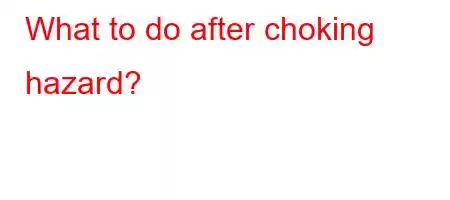Blog What to do after choking hazard?
Contents
What to do after danger of suffocation?
“First aid to the drowning person is important” Rescue breaths should continue for 1 minute, that is, approximately 10 breaths. If the rescued person is unconscious, not breathing and has no pulse, CPR should be applied to the person in the supine position while waiting for the medical teams. and adults sink in 50 seconds, children in 20 seconds. Brain death in water varies according to the temperature of the water, but it takes 3-4 minutes in adults. In babies, it is 5-6 minutes. What Should We Do If We're at Risk of Drowning!
What are the observed cycles of drowning?
The generally observed cycle of drowning develops as follows: 1. Confusion period: First five to ten Within seconds, the person dives into the water and rises to the surface. 2. Breath-holding period: The person holds his breath for a while in the water.
When to call 112 for drowning?
A life jacket for the person who is in danger of drowning in the first place Throw unsinkable objects such as life buoys. If these materials are not available, pull the person by holding on to tools such as long sticks and ropes. 2. After the drowning person is brought ashore, the first thing to do is always call 112 for help.
What is it like to die by drowning?
The oxygen transport of the blood to the tissues is impaired. In salt water, death occurs in 5-6 minutes. Since the amount of sodium chloride in the swallowed water is high, the blood fills the lungs from the veins. Death occurs as a result of tissues that cannot be oxygenated.
Which of the following should be done in drowning?
6) Which of the following should be done in drowning? If it was a result of the jump, he should push his head far back and get it out of the water. BLS should be started even if 20-30 minutes have passed since the event, especially in cold weather. Medical assistance is awaited in a semi-sitting position.
How is drowning divided into?
Suffocation due to suffocating gases: It is the type of suffocation caused by gases such as carbon dioxide. Chemical suffocation: A type of suffocation that occurs as a result of inhaling a gaseous chemical. Drowning: A type of drowning that occurs as a result of the lungs being filled with water.
Read: 191


